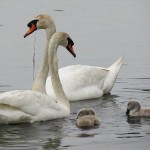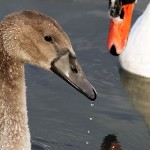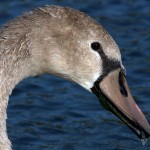Jul 04, 2014 – Carrollton, Texas
NOTE: This post is part of a continuing series of observations: [ First | << Prev | Next >> ]
Our Mute Swan cygnet is now eleven weeks old. The most notable change in his appearance from the week before is the continued growth of his wing and tail feathers. I have included closeup pictures of both towards the end of this article.
My latest information states that juvenile swans must be between 17 and 21 weeks of age before they are able to fly. That means we are looking at around six more weeks for this young bird, best case.
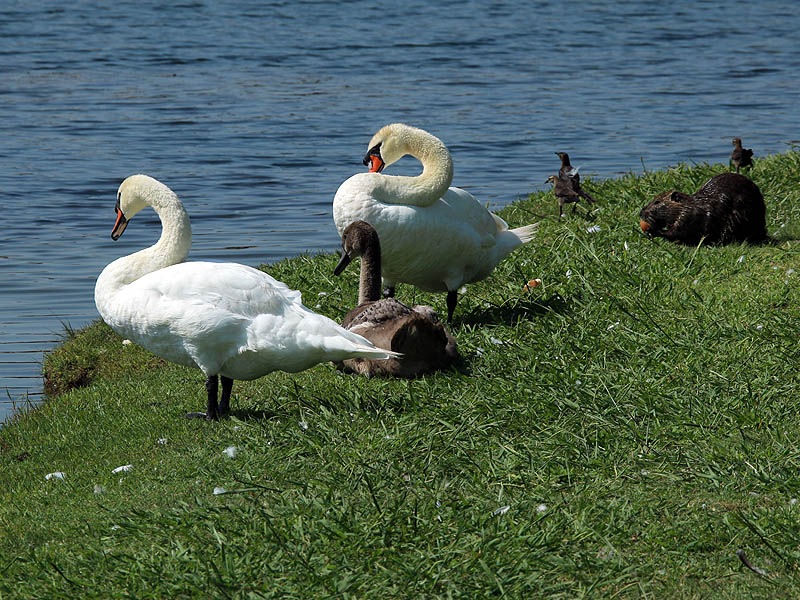

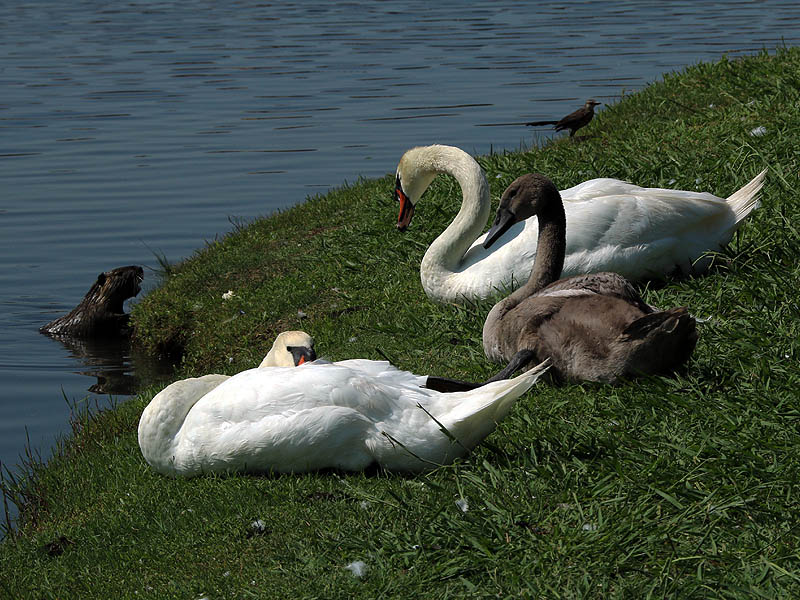
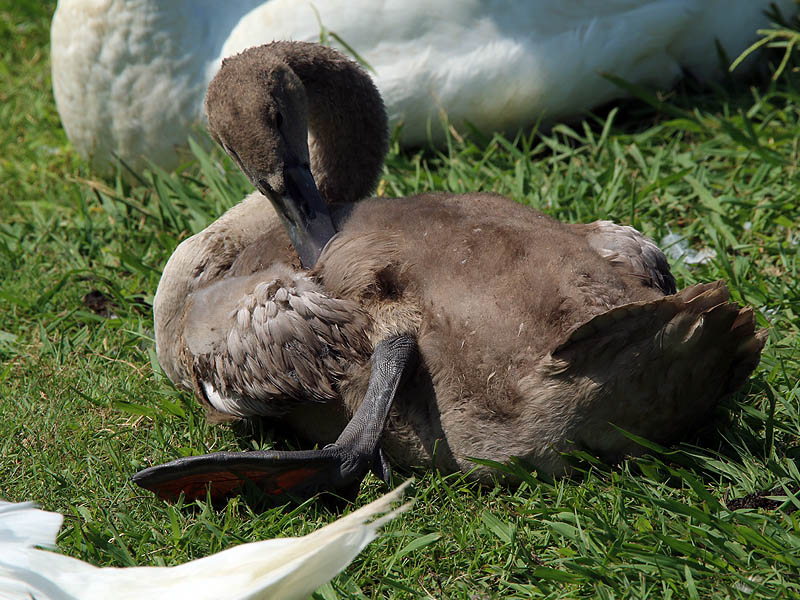
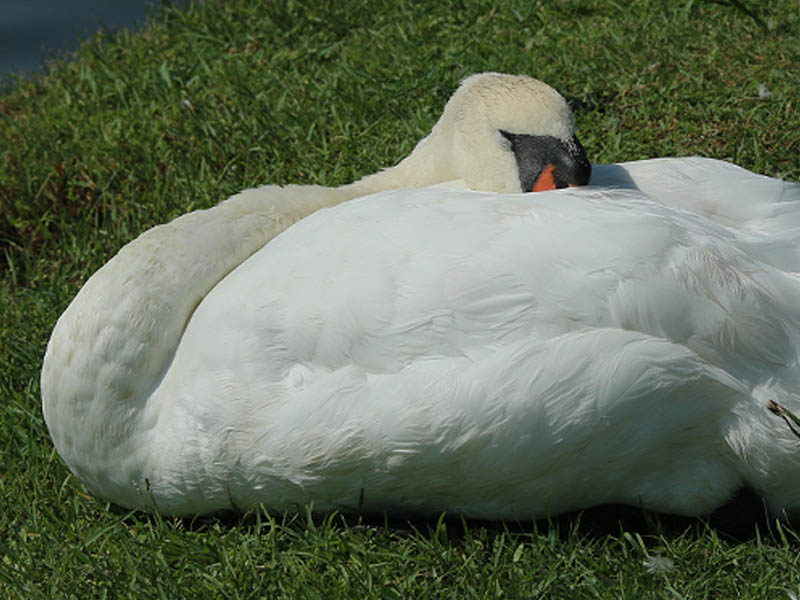
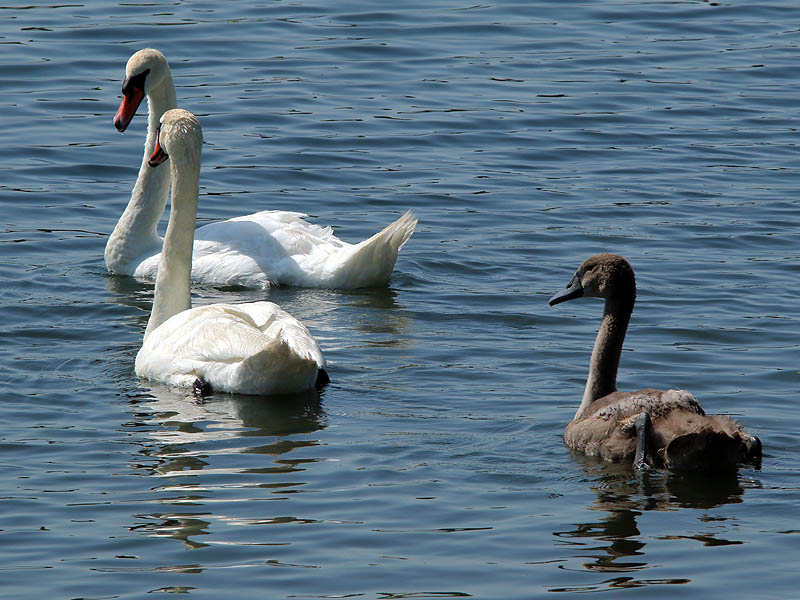
In past updates I have noted how the cygnet has a tendency to hold his left foot out of the water and at odd angles. I have not been overly concerned about this, but as of this week it is beginning to strike me as a little odd.
The water in the lake was a bit clearer than normal this week, and I was able to see that the juvenile swan is only using his right foot to paddle when swimming about. At least this was the case while I was watching him. I am now a little worried that the young bird has hurt his leg somehow, even though an injury is not apparent in any of my photographs.
I will keep a careful watch on this over the next several weeks. Hopefully it is nothing.
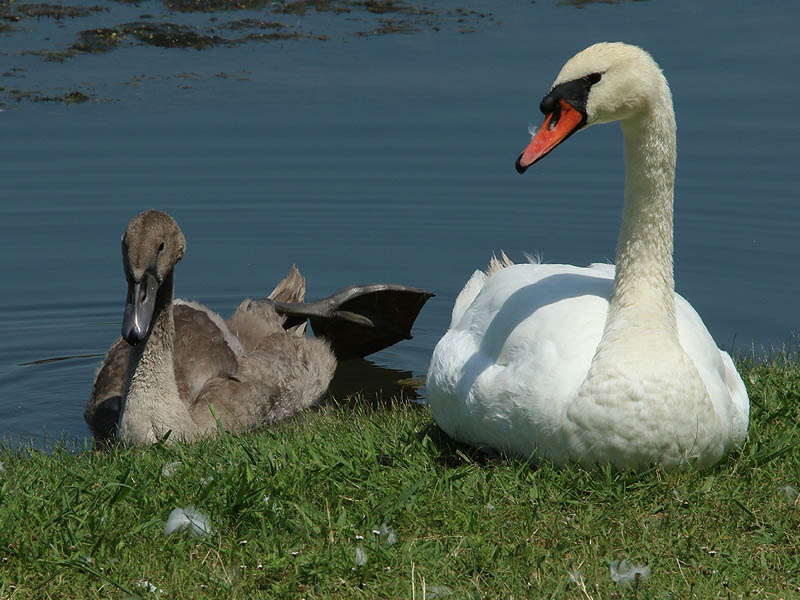
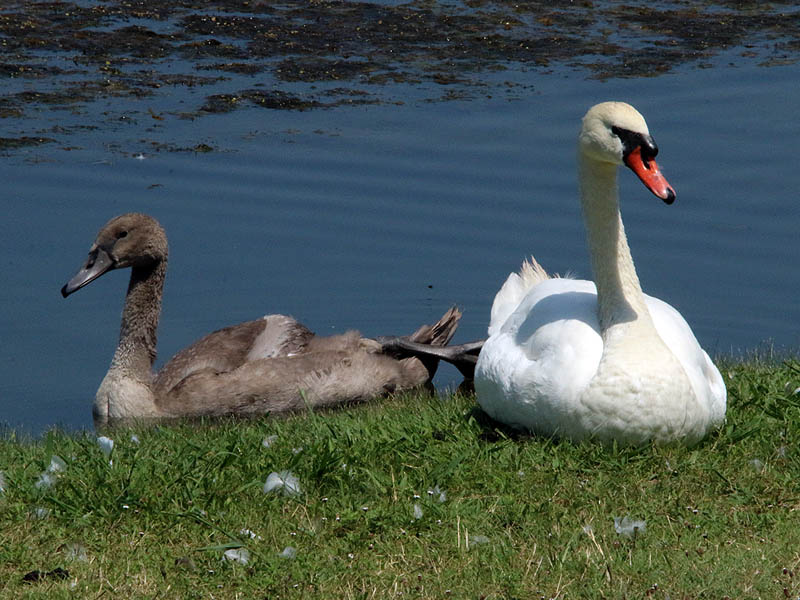
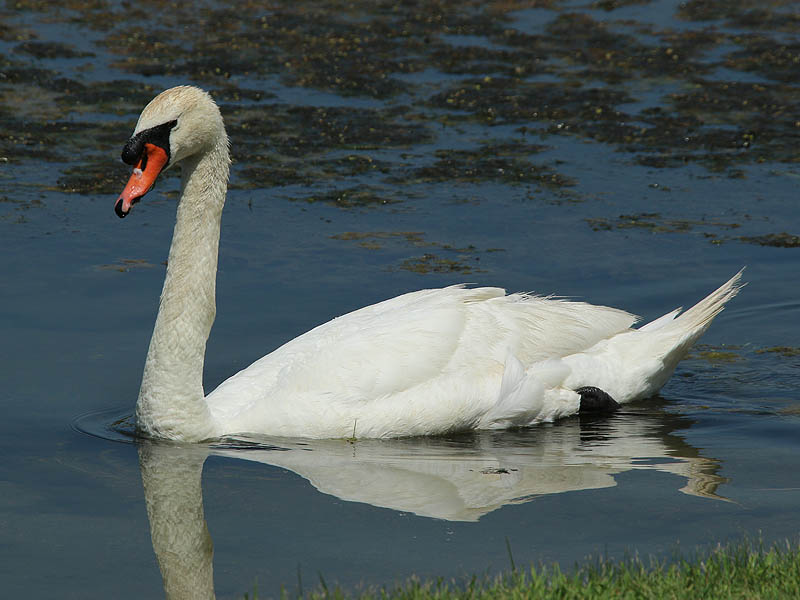
The following picture shows a take off sequence for a large adult male. The bird was simply moving from one end of the lake to the other, but getting airborne still required a tremendous effort. Here is what Wikipedia says about the size and weight of these large birds and how it affects their ability to fly:
Adults of this large swan typically range from 140 to 160 cm (55 to 63 in) long, although can range in extreme cases from 125 to 170 cm (49 to 67 in), with a 200 to 240 cm (79 to 94 in) wingspan. Males are larger than females and have a larger knob on their bill. On average, this is the second largest waterfowl species after the trumpeter swan, although male mute swans can easily match or even exceed a male trumpeter in mass. Among standard measurements of the mute swan, the wing chord measures 53–62.3 cm (20.9–24.5 in), the tarsus is 10–11.8 cm (3.9–4.6 in) and the bill is 6.9–9 cm (2.7–3.5 in).
The mute swan is one of the heaviest flying birds, with males (known as cobs) averaging about 11–12 kg (24–26 lb) and the slightly smaller females (known as pens) weighing about 8.5–9 kg (19–20 lb). While the top normal weight for a big cob is 15 kg (33 lb), one unusually big Polish cob weighed almost 23 kg (51 lb) and this counts as the largest verified weight for a flying bird, although it has been questioned whether this heavyweight could still take flight.
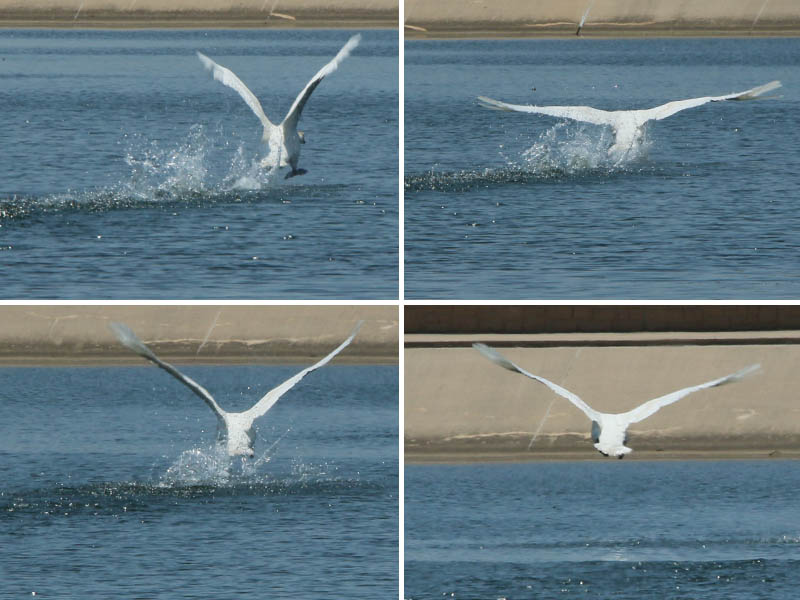

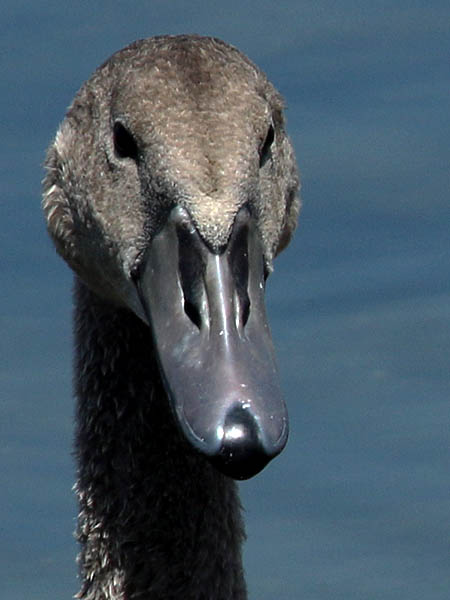
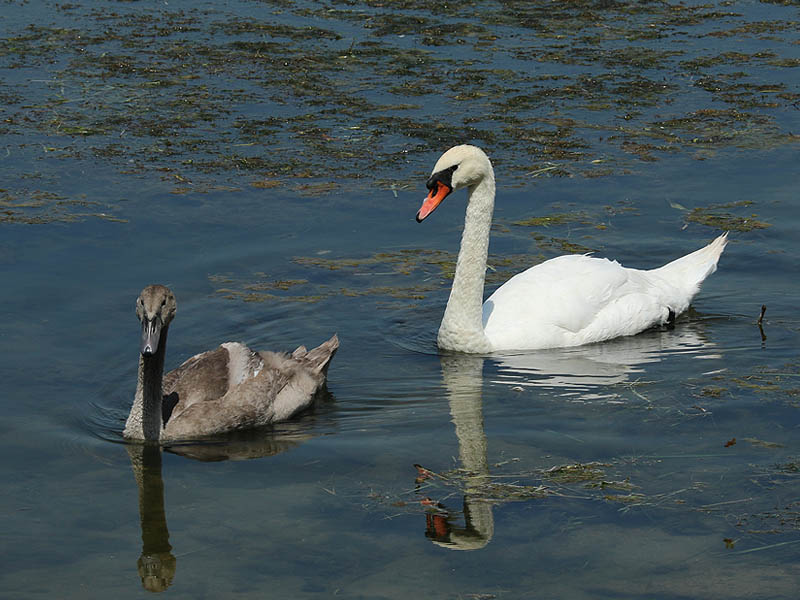
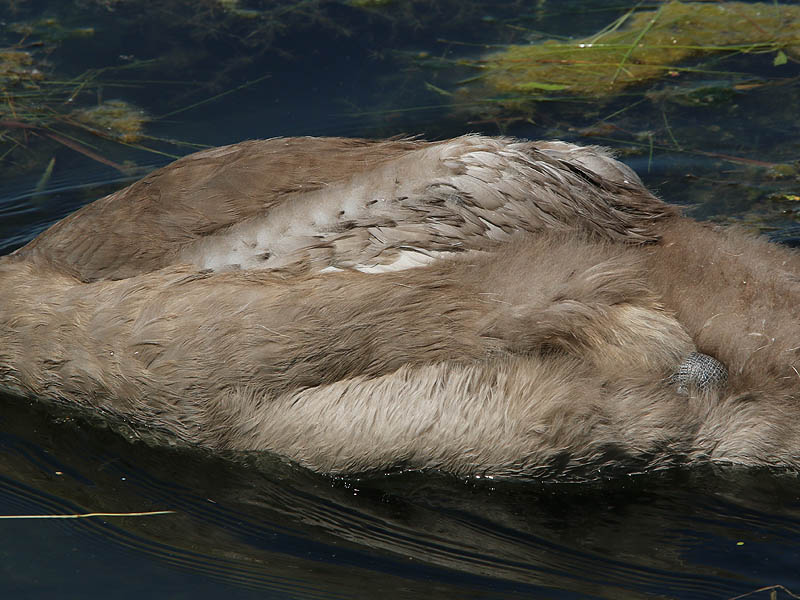
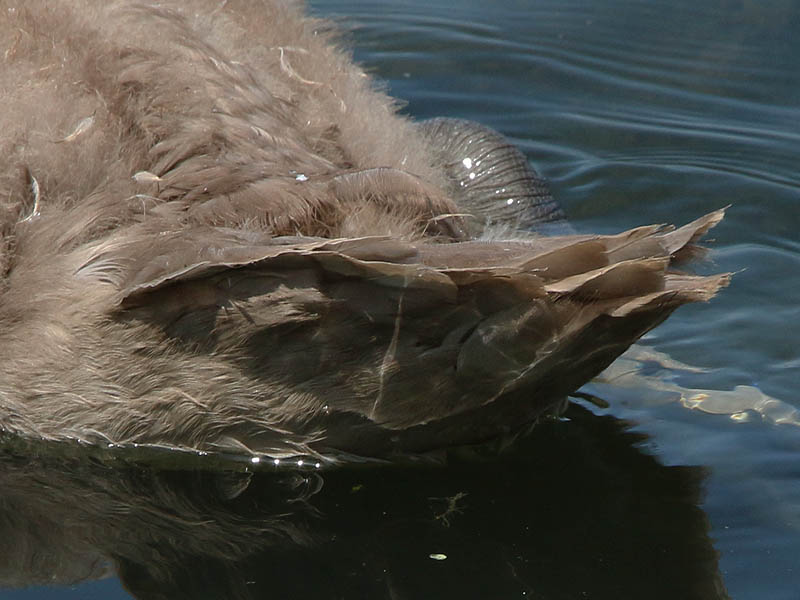
NOTE: This post is part of a continuing series of observations: [ First | << Prev | Next >> ]


